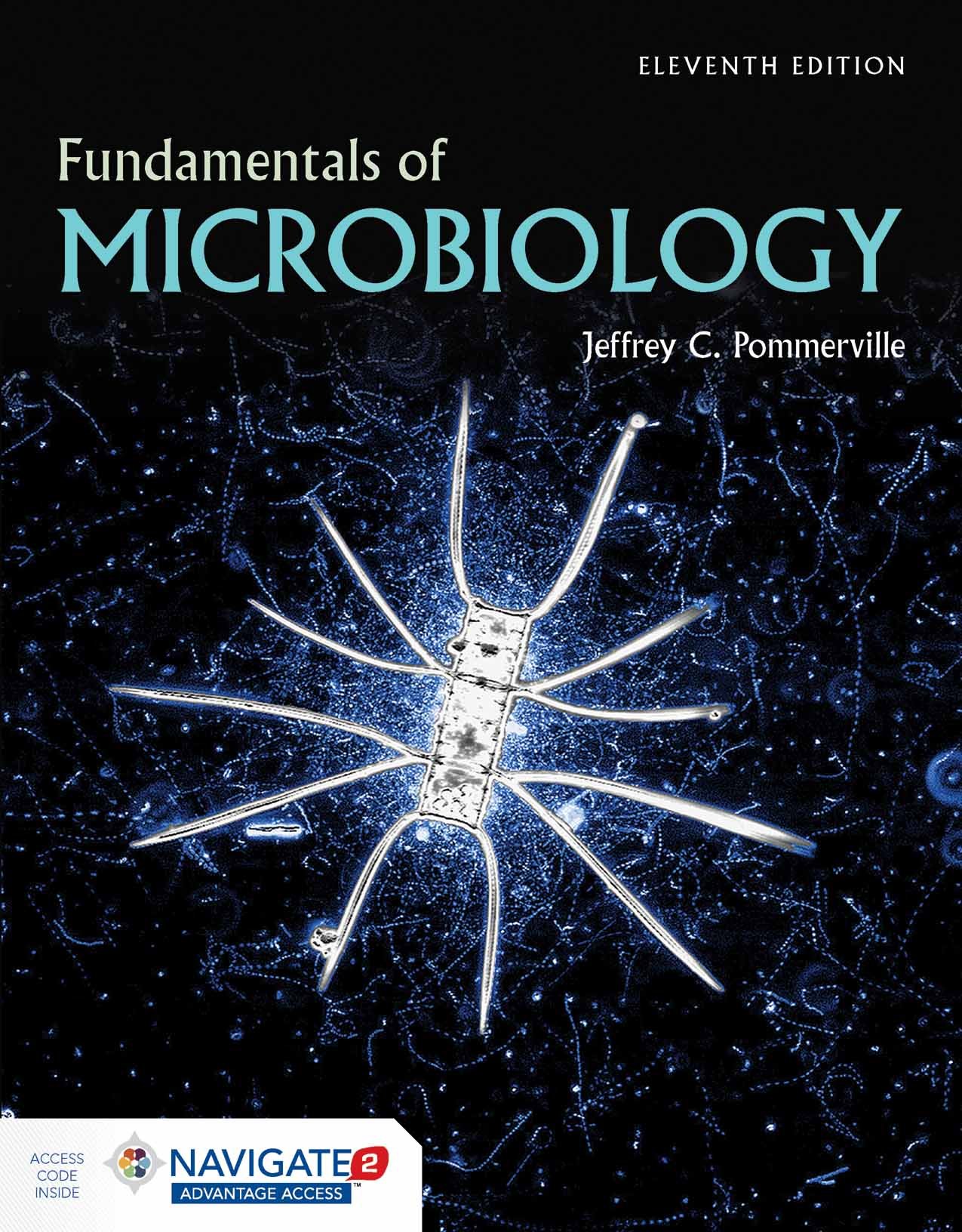Fundamentals of Microbiology 11th Edition Pommerville Test Bank
Digital item No Waiting Time Instant DownloadChapters: 26Format: PDFISBN-13: 978-1284100952ISBN-10: 1284100952Language: EnglishPublisher: Jones & Bartlett LearningAuthor: Jeffrey C. Pommerville
In Stock
Original price was: $55.00.$23.00Current price is: $23.00.
Fundamentals of Microbiology 11th Edition Pommerville Test Bank
Test Bank for Fundamentals of Microbiology, 11th Edition by Jeffrey C. Pommerville
Fundamentals of Microbiology, 11th Edition, by Jeffrey C. Pommerville, is a comprehensive textbook that provides a foundational understanding of microbiology. The associated test bank is a valuable resource designed to support students and educators in preparing for exams and enhancing their grasp of microbiological concepts. This test bank aligns with the textbook, offering practice questions and explanations to facilitate learning and assessment.
Overview
Purpose and Use
- Exam Preparation: Assists students in preparing for microbiology exams by offering a range of practice questions that reflect the content and format of the textbook.
- Concept Reinforcement: Helps reinforce understanding of key microbiological concepts and principles through targeted practice and review.
- Teaching Resource: Provides educators with a tool to evaluate student knowledge and guide instruction.
Key Features
Content Organization
- Alignment with Textbook: Questions are organized to mirror the structure and content of the 11th edition of Pommerville’s textbook, covering all major topics in microbiology.
- Comprehensive Coverage: Includes questions on fundamental microbiological concepts, microbial physiology, genetics, and applied microbiology.
Question Types
- Multiple-Choice Questions: The primary format, designed to test a wide range of topics including microbial taxonomy, pathogenesis, and laboratory techniques.
- True/False Questions: Evaluate understanding of specific statements related to microbiological theories, practices, and principles.
- Fill-in-the-Blank Questions: Assess knowledge of key terms, definitions, and concepts within microbiology.
- Short-Answer Questions: Require detailed responses to questions about microbial processes, mechanisms, and clinical implications.
- Case Studies: Present real-world scenarios to apply theoretical knowledge and solve practical problems in microbiology.
Answer Rationales
- Detailed Explanations: Each question is accompanied by a comprehensive rationale that explains the correct answer and why other options are incorrect.
- Educational Insights: Provides additional context and insights to enhance understanding of complex microbiological concepts and applications.
Key Topics Covered
Microbial Structure and Function
- Microbial Classification: Understanding of the different types of microorganisms, including bacteria, viruses, fungi, and protozoa.
- Cell Structure: Details on the structure and function of microbial cells, including differences between prokaryotic and eukaryotic cells.
Microbial Physiology
- Metabolism: Concepts related to microbial metabolism, including catabolism and anabolism, and how microorganisms obtain and use energy.
- Growth and Reproduction: Mechanisms of microbial growth, reproduction, and the factors affecting these processes.
Genetics
- Genetic Material: Understanding of microbial genetics, including DNA replication, transcription, and translation.
- Genetic Variation: Concepts related to mutation, genetic recombination, and horizontal gene transfer.
Microbial Pathogenesis
- Disease Mechanisms: Understanding of how microorganisms cause disease, including virulence factors and mechanisms of pathogenicity.
- Host-Pathogen Interactions: Concepts related to the immune response to infections and the strategies used by pathogens to evade host defenses.
Applied Microbiology
- Clinical Microbiology: Application of microbiological principles to the diagnosis and treatment of infectious diseases.
- Environmental Microbiology: Study of microorganisms in different environments, including soil, water, and extreme environments.
Laboratory Techniques
- Microbiological Techniques: Knowledge of techniques used in microbiology labs, including culturing, staining, and microscopy.
- Diagnostic Methods: Methods for identifying and characterizing microorganisms, including biochemical tests and molecular techniques.
Benefits of the Guide
For Students and Practitioners
Comprehensive Review
- Provides extensive coverage of essential microbiological topics, ensuring a solid understanding of core concepts.
- Practice questions and rationales enhance comprehension and retention of key material.
Effective Exam Preparation
- Questions and formats closely resemble those found on exams, improving readiness and confidence.
- Detailed rationales offer valuable insights into the reasoning behind correct answers and help clarify misunderstandings.
Flexible Study Resource
- Organized content allows for targeted study sessions, focusing on specific areas of interest or difficulty.
- Additional resources and review sections support efficient and thorough preparation.
For Educators
Supplemental Teaching Tool
- Test bank questions can be integrated into lectures, discussions, and assignments to reinforce learning and assess student understanding.
- Provides a basis for evaluating students’ grasp of microbiological concepts and their ability to apply knowledge in practical situations.
Assessment and Feedback
- Practice questions help identify students’ strengths and weaknesses, guiding further instruction and study.
- Detailed rationales offer constructive feedback and opportunities for improvement.
Practical Applications
Self-Study and Review
- Utilize the test bank for structured study sessions to review and consolidate microbiological knowledge.
- Conduct practice exams to assess preparedness and identify areas needing additional focus.
Group Study Sessions
- Collaborate with peers using practice questions and rationales for interactive learning and discussion.
- Engage in group study activities to enhance understanding and application of microbiological concepts.
Exam Preparation
- Prepare for microbiology exams with comprehensive practice questions and detailed rationales.
- Utilize the test bank’s case studies and clinical scenarios to simulate real-world exam conditions and improve problem-solving skills.
Conclusion
“Test Bank for Fundamentals of Microbiology, 11th Edition by Jeffrey C. Pommerville” is a vital resource for students and educators seeking to deepen their understanding of microbiology and prepare for exams. With its extensive range of practice questions, detailed rationales, and alignment with the textbook’s content, this test bank provides a robust tool for mastering microbiological concepts and enhancing academic and professional success. Whether used for individual study, group review, or educational purposes, this resource supports effective learning and assessment in the field of microbiology.


Reviews
There are no reviews yet.